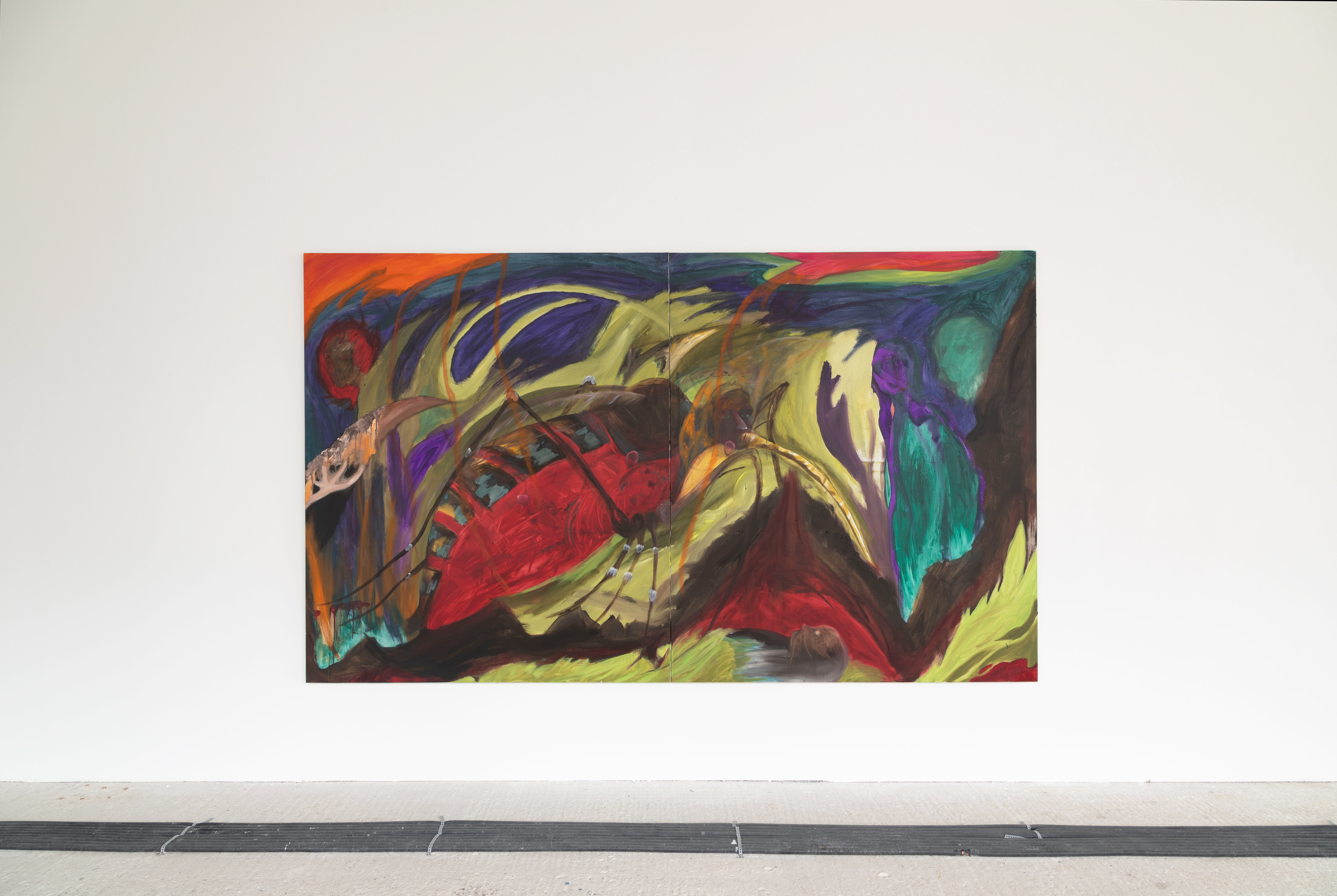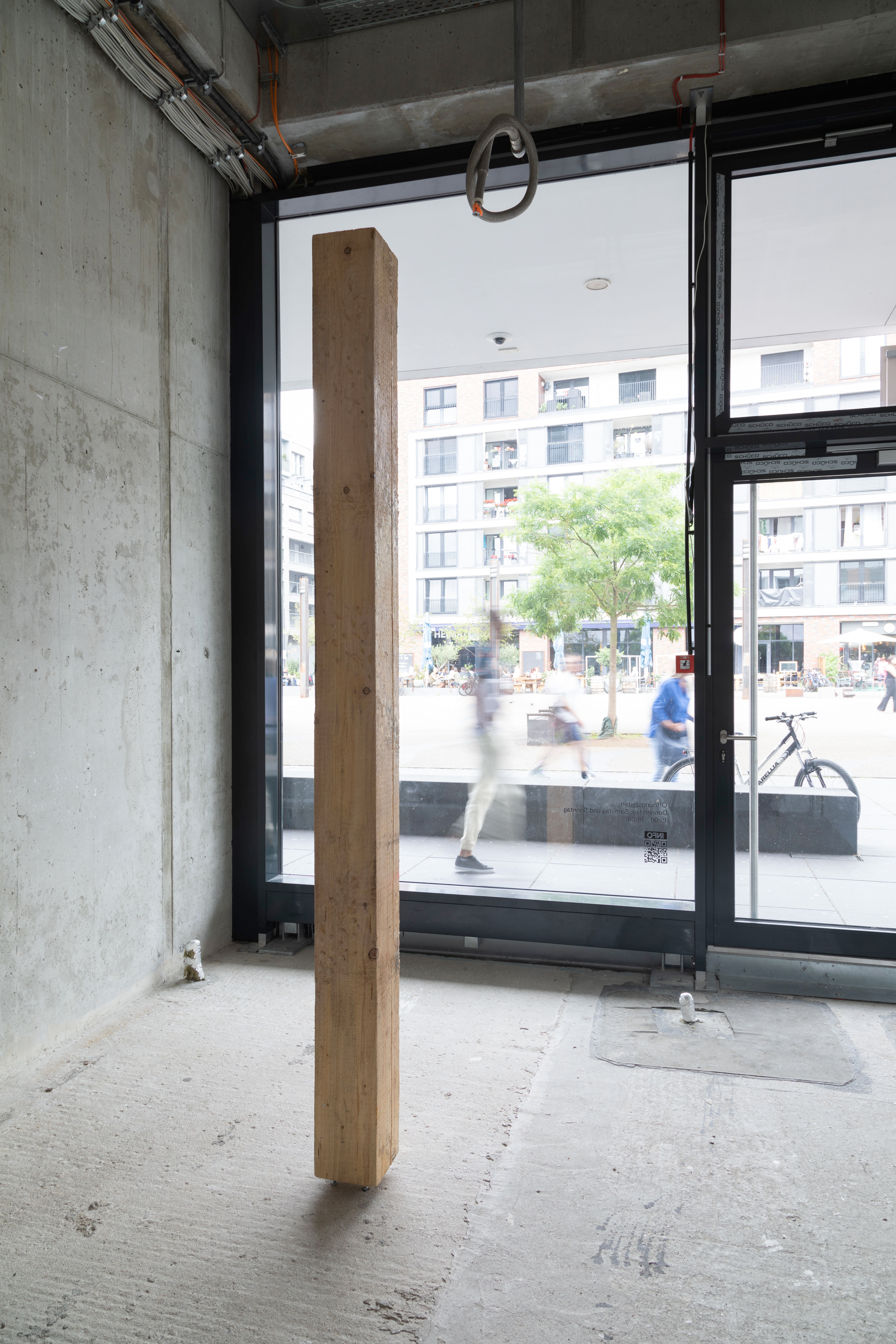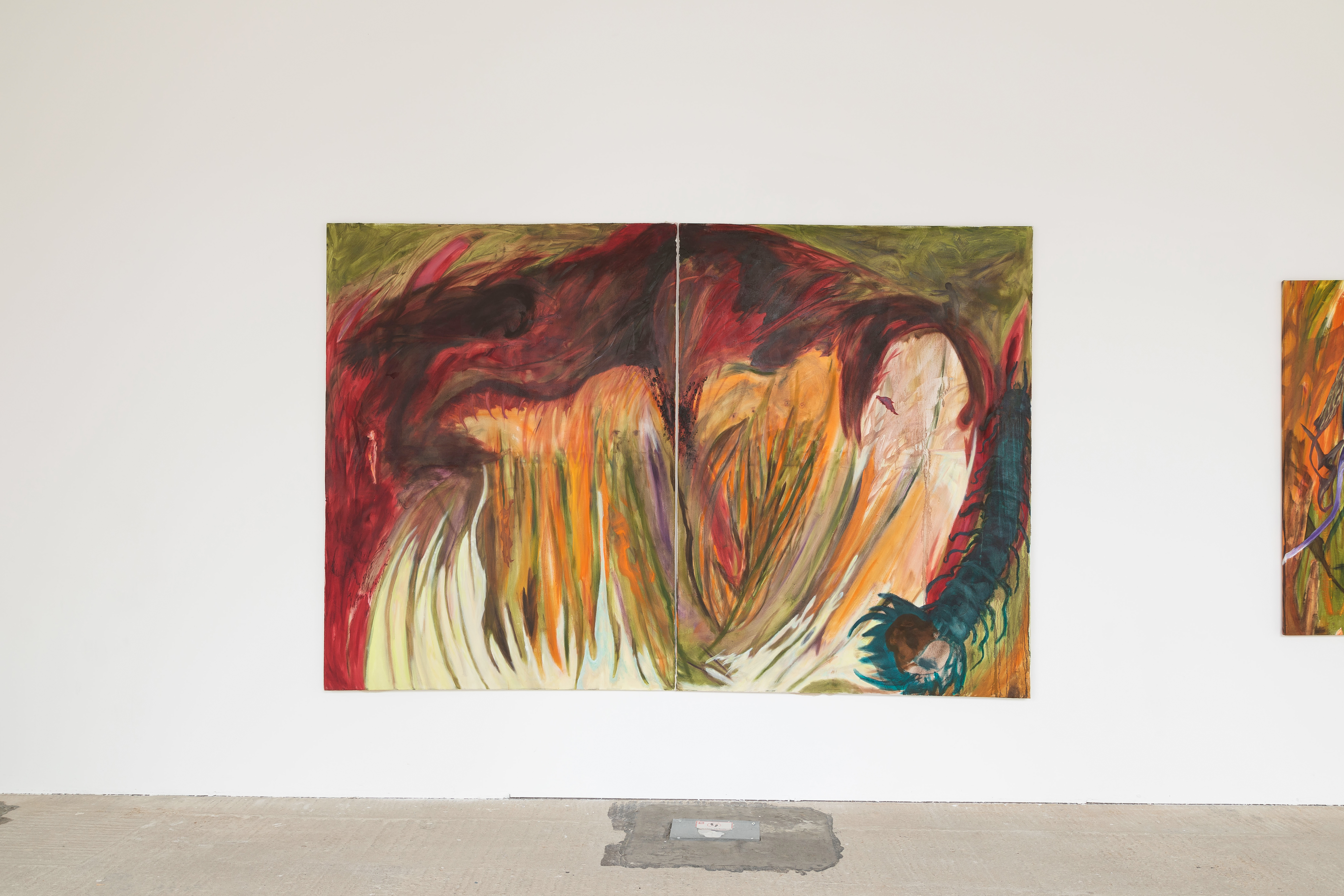Marcations
11.08.2023 – 27.08.2023
11.08.2023 – 27.08.2023








Kaïs Dhifi, Tornike Gognadze, Clara Reiner, Ishmat Habib and Lilli Thiessen
If someone were to run their fingers along the glass facade of the exhibition venue, they might encounter a couple of things along the way. Those encounters are signs that hint at the somewhat unusual character of the place. The hand might meet: Several varieties of spiders (their webs also), as well as a myriad of other critters, some live, some only as exoskeletal remains (in the spider webs), sticky patches of melted ice cream or soda dried-up on the surface and, by chance, a hole, mended haphazardly with silicone - injected into the space between the enormous panes, likely torn into the glass curtain by stones or even an occasional bullet. The building that hosts the exhibition venue is cleverly designed to provide a spacious open-plan ground floor, with only few concrete pillars diverting the gravitational force of the residential complex towering above into the ground below. To create attraction, almost total visibility of the interior is granted by the wrap-around windows. Recurring now to the bullet hitting the glass, shattering and fragmenting what was initially conceived to be a transparent shield, at once referring the public to its place outside by means of its rigid impermeability and luring it towards whatever is offered up inside, it appears that the screen gains something of a life of its own. The marks left on the surface by chance or deliberate action are traced onto the interior walls by the sunlight pouring in. The alterations and manipulations, having transformed the invisible plane into a visible structure that now appears deficient and precarious in its progressing state of disrepair, allude to the complex relationships that involve the processes of using, manipulating, and creating exterior surfaces. Whether it be by choice or by default, the surfaces act as interfaces of communication, turning superficiality into outward projection of inscribed meaning. Their material makeup alone gives rise to associations about societal relations and inherent power dynamics that may only become apparent through acts of appropriation. The manifold ways in which information is communicated determine who is taking part in the exchange and how they are being addressed. Hence design and manipulation of any exterior surface, using flatness and visibility, allow for subversion and critique. By extension, art practices that involve the making and unmaking of communications via surface manipulation may illustrate different facets of these potentials. For „Marcations“, we invited artists whose works showcase different approaches to realizing the inherent communicative trait of the flat plane. Operating with methods such as humorous appropriation, refiguration of materials, deformation of spatial imaginaries and invocation of vernacular and traditional stories, the works make a case for a contemporary discourse on a specific ‘school’ of art-making. A discourse that extends traditional notions of- and opens up new perspectives on working with flat planes and withstands being overdetermined by and absorbed into the self-referential theoretical abstractions taught in art history.
Curated by Timon Sioulvegas, Jakob Francisco, Marina Köstel and Johannes Schwalm
Text by Timon Sioulvegas
Photos by Charlotte Berg
If someone were to run their fingers along the glass facade of the exhibition venue, they might encounter a couple of things along the way. Those encounters are signs that hint at the somewhat unusual character of the place. The hand might meet: Several varieties of spiders (their webs also), as well as a myriad of other critters, some live, some only as exoskeletal remains (in the spider webs), sticky patches of melted ice cream or soda dried-up on the surface and, by chance, a hole, mended haphazardly with silicone - injected into the space between the enormous panes, likely torn into the glass curtain by stones or even an occasional bullet. The building that hosts the exhibition venue is cleverly designed to provide a spacious open-plan ground floor, with only few concrete pillars diverting the gravitational force of the residential complex towering above into the ground below. To create attraction, almost total visibility of the interior is granted by the wrap-around windows. Recurring now to the bullet hitting the glass, shattering and fragmenting what was initially conceived to be a transparent shield, at once referring the public to its place outside by means of its rigid impermeability and luring it towards whatever is offered up inside, it appears that the screen gains something of a life of its own. The marks left on the surface by chance or deliberate action are traced onto the interior walls by the sunlight pouring in. The alterations and manipulations, having transformed the invisible plane into a visible structure that now appears deficient and precarious in its progressing state of disrepair, allude to the complex relationships that involve the processes of using, manipulating, and creating exterior surfaces. Whether it be by choice or by default, the surfaces act as interfaces of communication, turning superficiality into outward projection of inscribed meaning. Their material makeup alone gives rise to associations about societal relations and inherent power dynamics that may only become apparent through acts of appropriation. The manifold ways in which information is communicated determine who is taking part in the exchange and how they are being addressed. Hence design and manipulation of any exterior surface, using flatness and visibility, allow for subversion and critique. By extension, art practices that involve the making and unmaking of communications via surface manipulation may illustrate different facets of these potentials. For „Marcations“, we invited artists whose works showcase different approaches to realizing the inherent communicative trait of the flat plane. Operating with methods such as humorous appropriation, refiguration of materials, deformation of spatial imaginaries and invocation of vernacular and traditional stories, the works make a case for a contemporary discourse on a specific ‘school’ of art-making. A discourse that extends traditional notions of- and opens up new perspectives on working with flat planes and withstands being overdetermined by and absorbed into the self-referential theoretical abstractions taught in art history.
Curated by Timon Sioulvegas, Jakob Francisco, Marina Köstel and Johannes Schwalm
Text by Timon Sioulvegas
Photos by Charlotte Berg